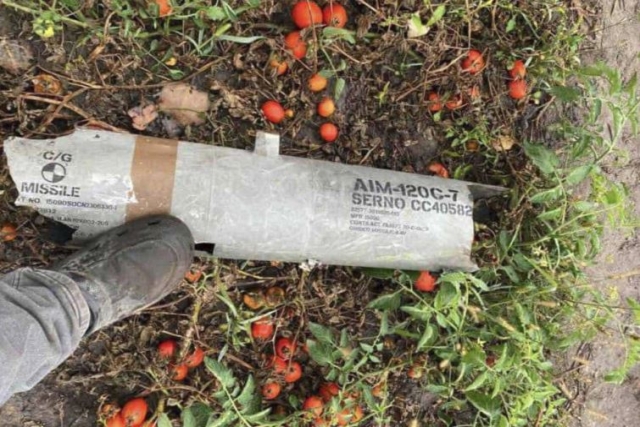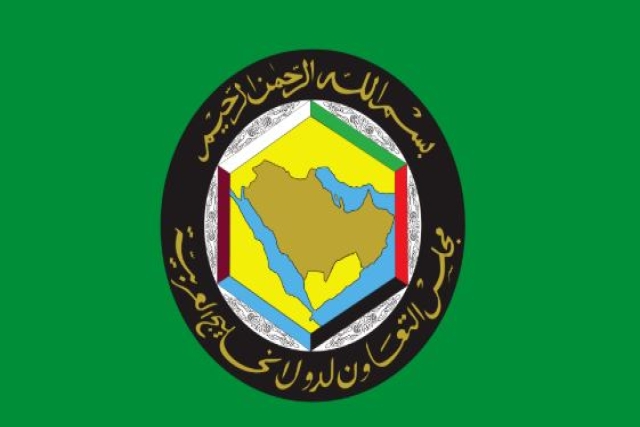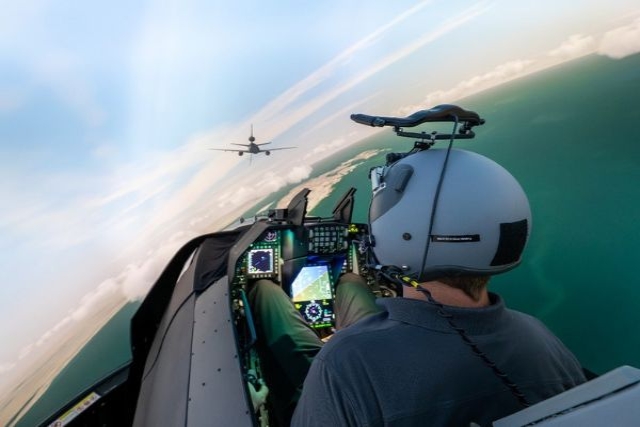The IN will be a three carrier navy: Assistant Chief of Navy

Rear Admiral Venkat Shankar, Assistant Chief of Naval Staff (Air), giving away a trophy: file photo
Rear Admiral Venkat Shankar, Assistant Chief of Naval Staff (Air) gave an interview to our print media partner, Vayu Aerospace. He spoke at lenght about the navy's plan for new aircraft, upgrading existing ones and inducting new UAVs and force multipliers. Excerpts from the interview.
DW : Integral airpower at sea is vital to the Navy’s blue-water capabilities. Can you elucidate upon the Navy’s Maritime Doctrine which calls for a minimum of three aircraft carriers in service at any time which includes ‘maintenance time’?
Rear Admiral Venkat Shankar, Assistant Chief of Naval Staff (Air): Presently, the Indian Navy has only one Aircraft Carrier with integral Sea Harrier fighters and anti submarine helicopters. Aircraft Carriers with their fighters and ship-borne helicopters play a pivotal role in our concept of operations. It is true that the IN envisages a three-aircraft carrier navy, with one carrier integral to each fleet on the West and East coasts to meet these tasks, with one carrier in the maintenance cycle at any given time. Our plans cater for phased induction of these carriers with integral fighters and helicopter in the years to come.
DW : It is reported that a batch of IN pilots have been sent to Russia for conversion to Mig29-K and the new squadron, INAS 303 has been announced. What is the schedule for delivery of the first Mig-29K/KUB for India?
Rear Admiral Venkat Shankar, Assistant Chief of Naval Staff (Air): It is true that the first batch of IN pilots are presently in Russia undergoing training on the first batch of Mig-29K combat and Mig-29KUB trainer aircraft.. on completion of flying training they will be part of the INAS 303 which will be the formation with Mig-29K aircraft. We expect the first batch of four aircraft to arrive in India before the middle of next year.
DW : A decision on the Long Range Maritime Patrol aircraft is yet to be announced, from what we understand, the P-8 MMA has been selected. When is the formal order to be placed?
Rear Admiral Venkat Shankar, Assistant Chief of Naval Staff (Air): The Boeing P-8I aircraft has been selected for induction into the navy to replace the ageing Tu-142M Long Range Maritime Reconnaissance aircraft. Necessary contract negotiations have already been completed and final government clearance is expected shortly. The contract will be inked once we receive government clearance.
DW : What type of UAVs does the IN operate? How effective have they been? We hear that the IN is looking at rotary UAVs, in particular the Fire Scout from the US. Could you comment on this?
Rear Admiral Venkat Shankar, Assistant Chief of Naval Staff (Air): The present holding of UAVs in the Navy include eight Searcher and four Heron UAVs procured from Israel. The UAVs have been extremely effective in conducting short range surveillance. The UAV force level is planned to be augmented by two additional long-range Herons which are currently under procurement. Concurrently we are working on the development of indigenous Naval Rotary UAV which can be operated from our ships. There is currently no specific plan to acquire the Fire Scout from the USA.
DW : The Navy’s force of Sea Harriers is being upgraded under the LUSH programme. Can give an overview of its enhanced capabilities?
Rear Admiral Venkat Shankar, Assistant Chief of Naval Staff (Air): The Limited Upgrade Sea Harrier (LUSH) involves the following added capabilities: • Integration of Beyond Visual Range (BVR) missiles in addition to the already existing Magic II all aspect air to air missile. The Harrier’s combat engagement range will be significantly enhanced with the availability of the missile. • The Elta pulse Doppler multi-mode radar has replaced the older Blue Fox pulse monopulse radar. The search and detection capabilities of this modern radar are excellent. • The combat Manoeuvre Monitor and Flight Recorder (CMMFR) System which essentially is a datalink between aircraft has been added to the Sea Harrier. This capability of datalink was not there on the earlier aircraft and will greatly improve the situational awareness of a group of aircraft when they operate together.
DW : Is the Il-38 Sea Dragon programme completed after receipt of five aircraft from Russia?
Rear Admiral Venkat Shankar, Assistant Chief of Naval Staff (Air): The Il-38 mid-life update programme caters for refurbishment of our inventory of Il-38 Long Range Maritime Patrol aircraft and re-equipping of with the State-Of-The-Art Sea Dragon Missile Suite (SDMS). Presently three aircrafts have arrived post-modernization. The remaining two which have been acquired in lieu of the two lost in the air accident at Goa in 2002 are undergoing refurbishment and modernization at Russia. These aircrafts are expected to join the fleet by next year, on completion of trials to resolve certain outstanding issues with regard to optimizing performance of SDMS.
DW : What are the plans for an AEW & C aircraft at sea?
Rear Admiral Venkat Shankar, Assistant Chief of Naval Staff (Air): The Indian Navy is responsible for maintaining Maritime Domain Awareness in the Indian Ocean Region (IOR), which requires early identification of potential threats, planning of responses, supporting, decision making and prioritizing resource allocation. There is little doubt that in any modern warfare, the power and battlefield transparency provided by the AEW & C aircraft will be a tremendous force multiplier. We already possess AEW capability in the form of the Ka-31 Helicopters that operate from our stealth frigates. However, a fixed wing AEW&C capability would further enhance the zone of surveillance around our units. Acquisition of such an aircraft has already been factored into our induction plans for the future.
DW : What is the Navy’s plan for mid-air refueling capability?
Rear Admiral Venkat Shankar, Assistant Chief of Naval Staff (Air): Presently, our Sea Harriers are capable of mid-air refueling which is being undertaken from the IAF’s Il-78 tankers. The MiG-29 Ks which are due to be inducted shortly would also be capable of refueling in the air. In addition these MiGs are also capable of ‘buddy” refueling during which one of the MiGs would carry additional fuel tanks along with a mid-air refueling system from which other MiGs could refuel whilst transiting to the area of interest.
DW : Many consider the Dornier 228 to be the ‘saMany consider the Dornier 228 to be the ‘saving grace’ for meeting the Navy’s maritime reconnaissance requirement. Are there plans for inducting more of these aircraft?ving grace’ for meeting the Navy’s maritime reconnaissance requirement. Are there plans for inducting more of these aircraft?
Rear Admiral Venkat Shankar, Assistant Chief of Naval Staff (Air): The Dornier 228 has been a valuable asset that can easily be described as the ‘backbone’ of our short to medium range maritime reconnaissance requirement. The Navy had originally acquired 15 of these aircraft and signed a further contract for 11 aircraft in 2005. HAL (Kanpur) has already delivered nine aircraft and the balance two are likely to be delivered soon. These aircraft are also equipped to operate in the information warfare role, paratrooper role, and for training of our air crew. Currently no new proposal for additional induction of these aircraft exists.










